We had done Roopkund trek in Uttarakhand in 2013. At that time, the mountains and meadows were pristine. Presently, as per Uttarakhand High court Order (Petition No. : 123 / 2014) on August 2018, overnight camping is banned on all the alpine meadows or Bugyals of Uttarakhand. So the current fate of Roopkund trek is uncertain.
Roopkund Trek in the Garhwal Himalayas will always remain special for us. It was the time for many firsts in this trek. Roopkund was our first week-long Himalayan Trek. It was the first time we were totally out of our comfort zone. And it was the first time that we travelled, rather trekked with a group of people.
Trekking was not really our forte even 7 years back. Before Roopkund, we had done Buxa Fort Trek, an easy day trek in West Bengal. And yes, we had done the Amarnath Yatra earlier that year in July. It was after completing the Amarnath Yatra, we actually understood how close we can go to nature while trekking. The yatra was one of our turning points. After coming back from Amarnath, we decided to go for a Himalayan trek, and Roopkund it was!
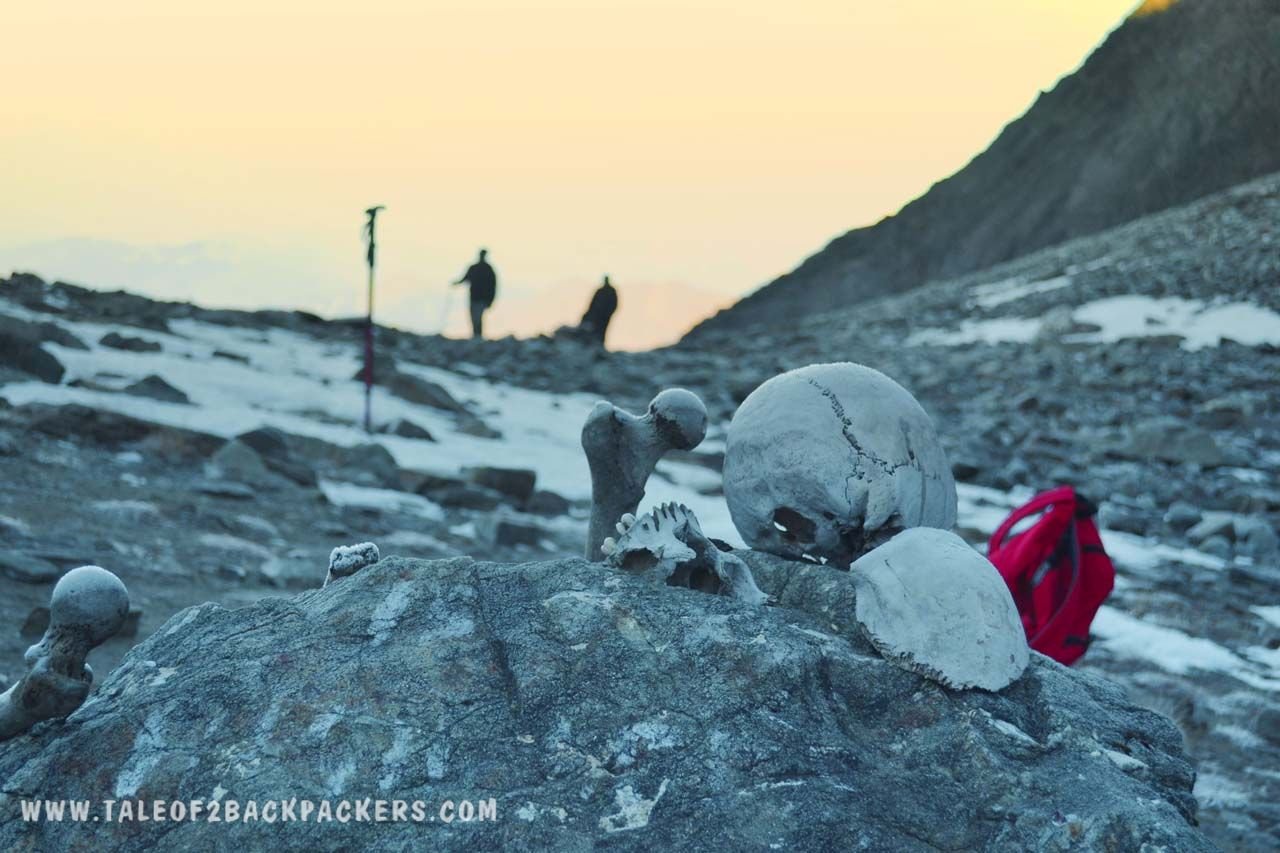
Roopkund Trek : The Skeletal Lake
Why is it called Skeletal Lake or Mystery Lake? This question haunted me for some moment before I checked on the internet. Actually, hundreds of skeletons and skulls are found around this glacial lake at an altitude of 16499 ft. From where did this skeleton come? What fateful day had seen the death of so many people? The answers were definitely not clear. Roopkund Lake lying on the lap of the Garhwal Himalayas is shrouded in mystery and myths.
Mystery behind the Roopkund Lake: Folklore of Roopkund
It was in 1942 when a British forest guard stumbled upon thousands of skeletons near the Roopkund Lake. Since then, these skeletons in the snowy realms of Himalayas have been the topic of research for anthropologists, historians and scientists. There are around 300 – 600 skeletons lying in the area. How did so many people lose their lives? A sudden hailstorm in the mountains might be the reason. It is said that cracks are found on the skulls – this might as well prove the theory of hailstorms.
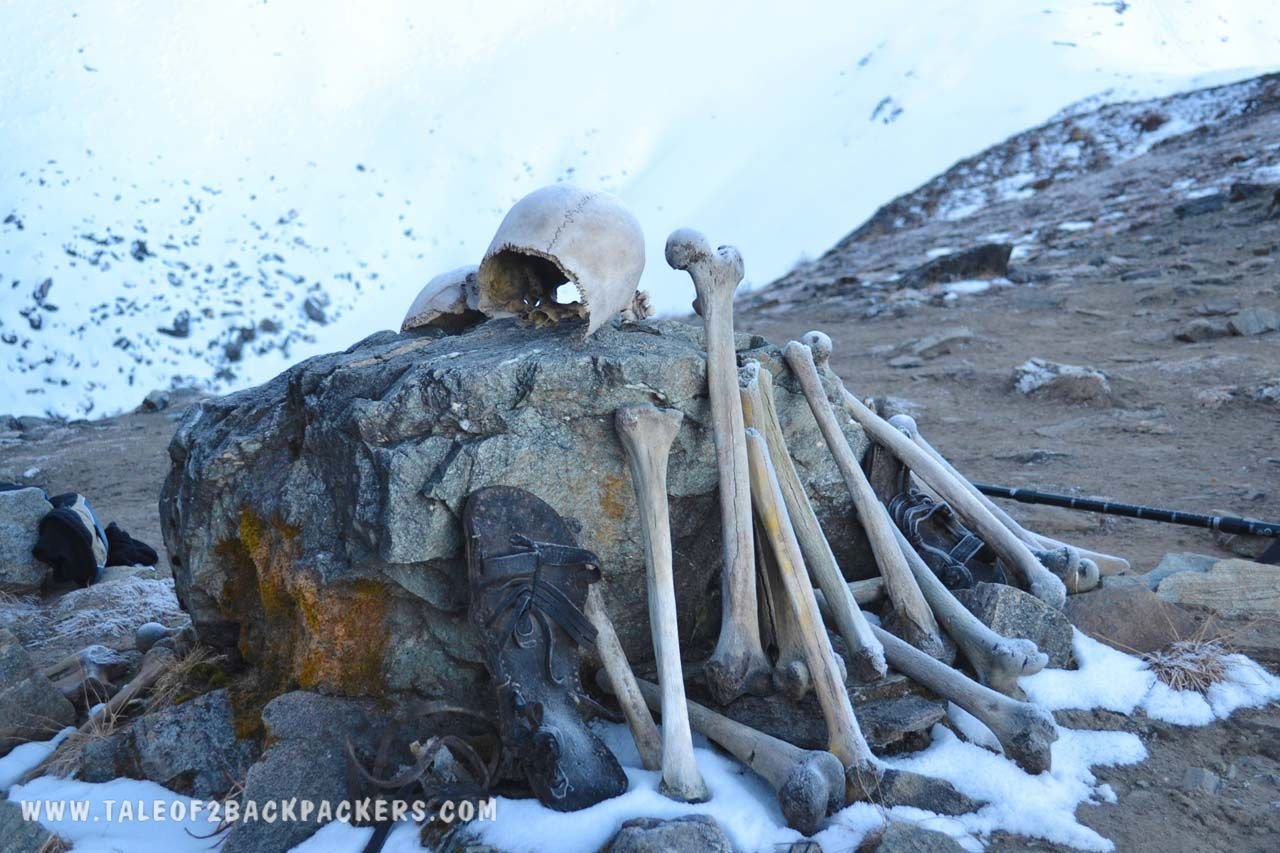
There are many theories about these bodies. Some scholars attribute the skeletons to General Zorawar Singh of Kashmir and his men returning after a failed attempt to conquer Tibet in 1841. They had lost their ways in and were never found. Some also believed that the skeletons belonged to the Japanese soldiers who died while crossing the region during the second World War. Of late, scientists have discovered that the skeletons belong to people from the 9th century who might have died from hailstorms. But here we would like to say, that the mystery still remains. And it enhances the enigma of the place.
While researchers are looking into scientific facts and proofs, the locals and layman have their own interesting folklore about the Roopkund Lake. Like most of the trek routes, Roopkund too has its share of stories.
Roopkund: The Lake of Reflections
- It is said that Goddess Parvati had killed the demon Mahisasur near the Bedni Kund in her Kali avatar.
- Meanwhile, as Goddess Parvati and Lord Shiva were on their way to Kailash, Goddess Parvati felt unclean after killing the demons and wanted to have a bath. After all, she had cleaned up the dirt on the earth! To please her consort, Lord Shiva created the Lake for the Goddess. The Goddess dipped herself in the blue waters of the lake and could see her beautiful reflection in the waters. This is why the Lake is named Roopkund (“roop” means beauty).
- And while the Goddess was having a bath, her son Lord Ganesh stood guard at the place, which is now known as Kalu Vinayak. It is from here you can see the Roopkund Lake for the first time.
- Bhaguabasa actually translates into “abode of tiger”. Goddess Parvati had left her tiger at this point before heading towards Roopkund to take a bath.
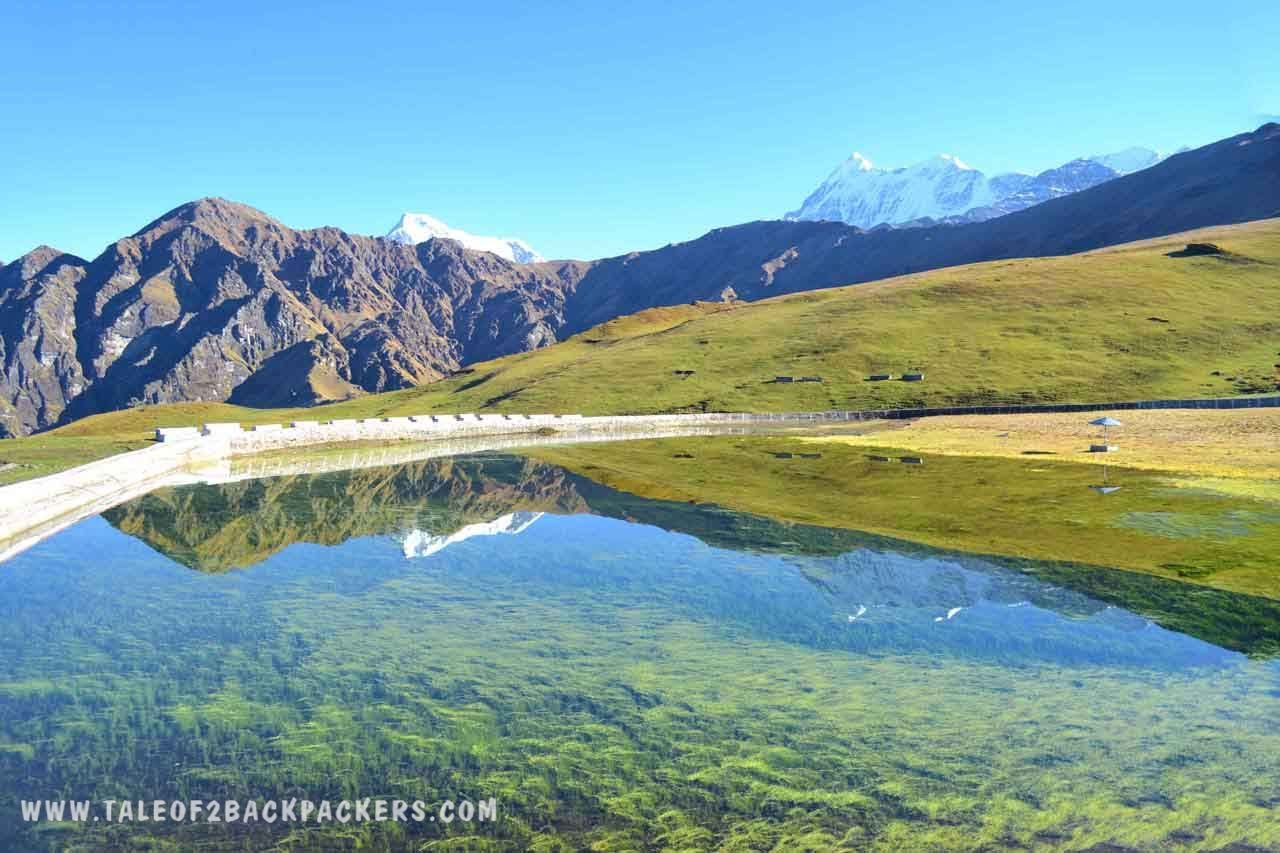
Roopkund: The Skeletal Lake
There is another local legend which goes on saying the king of Kanauj with his pregnant wife, servants, dance troupes and others went on a pilgrimage to Goddess Nanda Devi. The king was quite arrogant and was careless in holding the sanctity of the place. He faced repeated bad omens on the way, but he continued his journey in all his pride. He even forgot to offer his prayers to the Goddess, as he was too engrossed watching the three royal dancers. The Goddess was infuriated and burned three holes at the feet of the three dancers. The craters are said to be seen at Pathar Nachauni.
Even then the king did not come to his senses. His wife gave birth near one of the caves near Goddess Nanda Devi’s abode. The pregnancy ended in a miscarriage ending the lives of both the baby and the queen. Even after all these, the arrogant king continued his trek towards Roopkund with his army. As they reached the lake, they faced hailstorms that perished the entire army. The skeletal remains of the army could still be seen around the lake. It is said that only the king survived the storm. The goddess appeared before him and cursed him that the people in his race would have to visit the lake once in every 12 years barefoot and with bare necessities. Since then Nanda Jat Yatra once every 12 years has become a tradition.
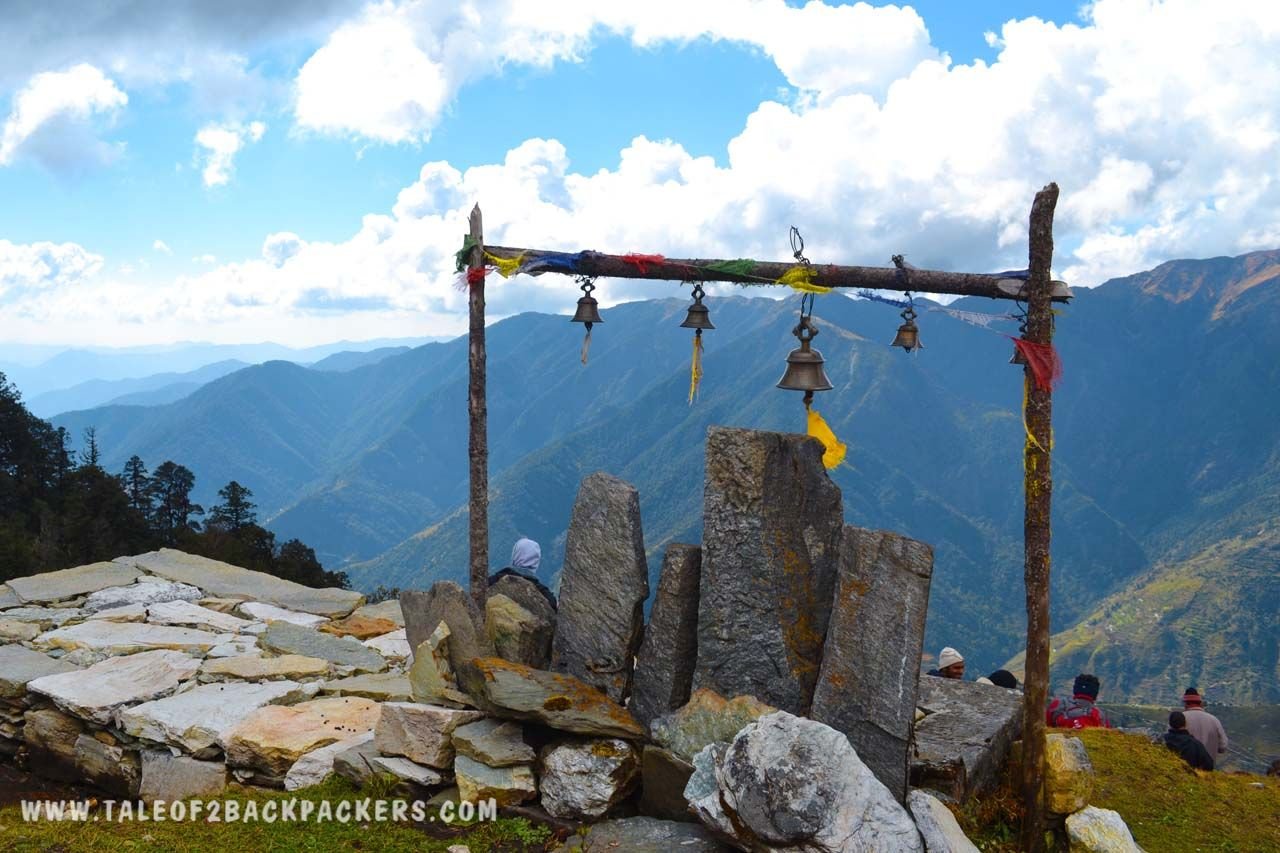
Every 12 years, the Nanda Jat Yatra takes place and thousands of pilgrims head towards Hemkund Lake to pay homage to Goddess Nanda Devi. The lake is further ahead from Roopkund Lake and the pilgrims undertake a journey for 22 days under much inhospitable conditions. The locals of Garhwal and Kumaon believe that a mysterious four-horned ram can be seen in the area. The sight of the ram is said to be very auspicious. Faith makes people do wonders!
Each day of the trek is like the unraveling of a new story. There are folklores and myths that we learnt every day. And then there is the majestic beauty of the Himalayas – the vast expanse of the green meadows, the magnificent view of the mighty Trishul and the jungle trails. All these simply made us fall in love with trekking and after the Roopkund Trek, there was no looking back!
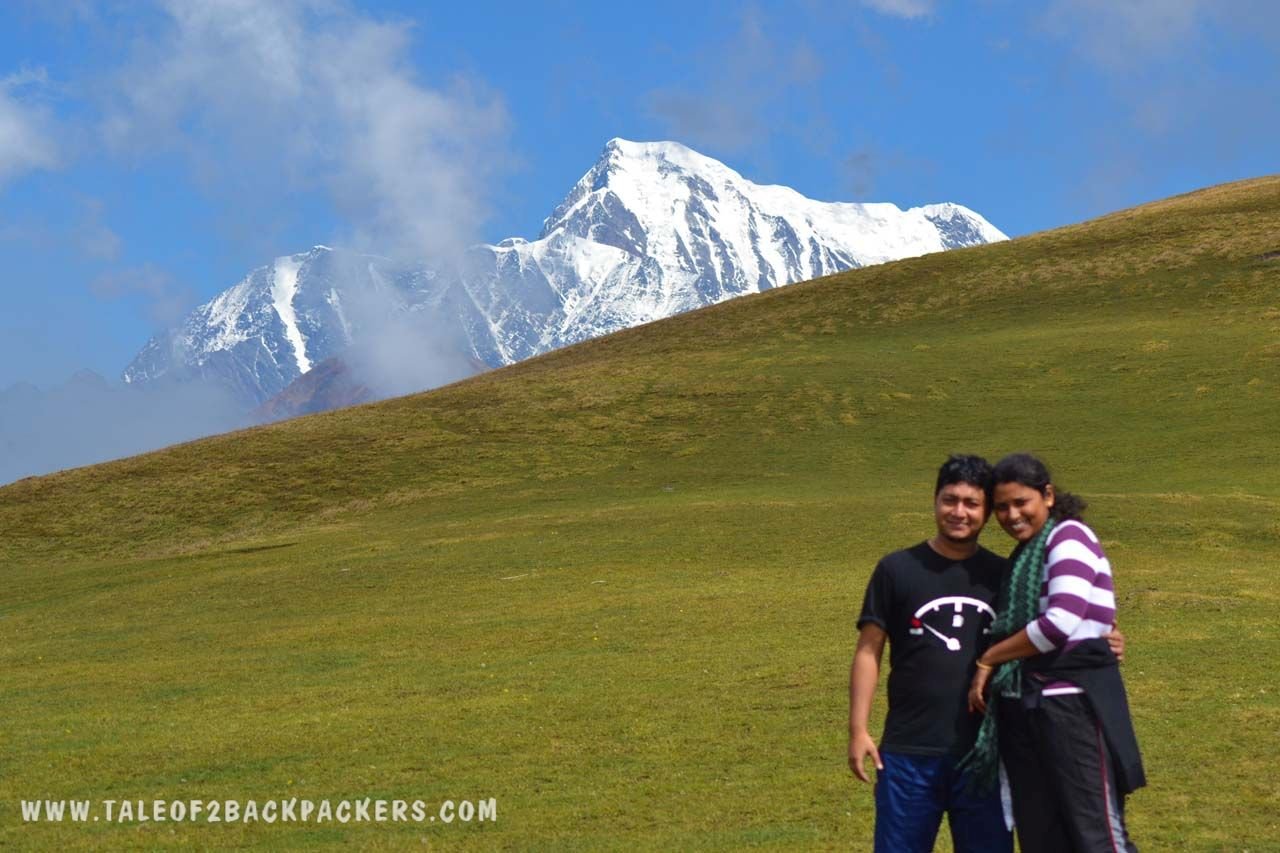
Journey to Kathgodam
Our journey to Kathgodam, Uttarakhand was no less an adventure. The train we boarded from Delhi station was 4 hours late. The train was totally packed and we hardly managed to get our seats. The concept of reserved seats was thrown out of the window in this case. The train started late and as usual, got delayed on way too. We reached Kathgodam railway station at around 12:30 at night!
The next day, we started towards Lohajung, our basecamp for the trek. After 11 hours of long and arduous journey, we reached Lohajung at around 7:30 in the evening. Later we were briefed about the next 6 days of the ordeal that was waiting for us. Physical strength will just not be enough, we were told. Tremendous will power and mental strength were required to complete the trek. This was probably meant towards me because Agni was quite fit.
I was raring to go. But I was obviously totally ignorant about what a 6-day long Himalayan trek was about! Not only did it require will power, but also my mental strength had to be stretched to the fullest to complete the trek. But once it was done, I was never the same person again. On retrospection, I think it was here where the traveller in me was born and I was never a tourist again. Another life-changing moment was when I completed the Rupin Pass Trek even after a knee injury. That trek also needed all my will power!
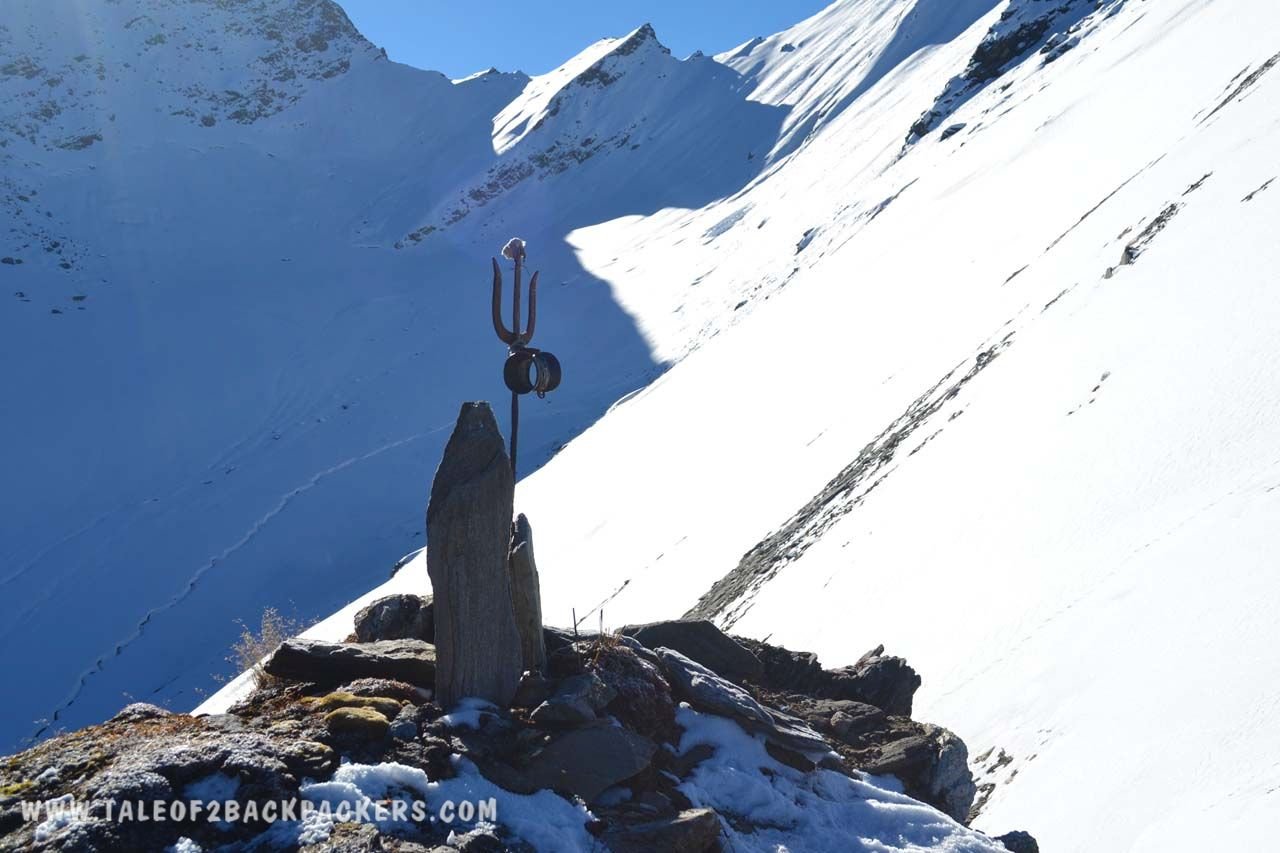
Detailed Itinerary of Roopkund Trek
Day 1: The Teaser : Lohajung – Didina
We started early in the morning after breakfast. The trek started with a mild walk along a rocky path and then gradually followed a jungle trail that descended downwards. We crossed an iron bridge called the Raun Bagad and soon heard the gurgling sound of water flowing. We finally caught sight of the clear waters of the Neel Ganga. It is the river in its purest form before it entered into civilization. We filled up our water bottles from here, crossed the stream and started our trek further.
In my excitement, I opened my shoes, dipped my feet into the water and had lots of fun. And this is where I made the mistake. The body cooled down and trekking the next ascent became quite difficult.
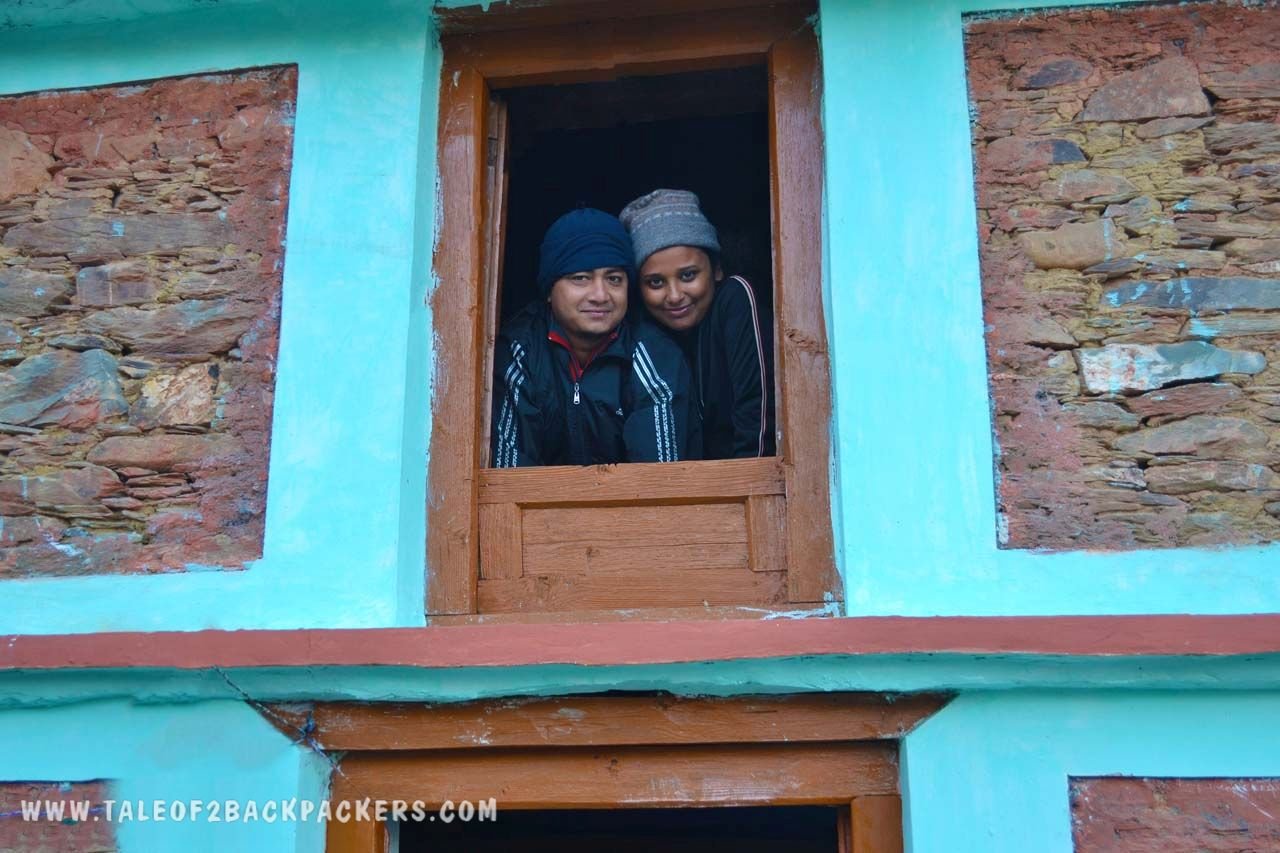
Our ascent towards Didina began. Within 15 minutes I was totally out of breath, my legs were giving away and I simply felt that I could not walk any further. Indeed, will power was required to complete the ascent towards Didina. It was great that Agni continuously supported me and so did our trek lead.
We reached Didina village in the afternoon. The villagers welcomed us with a glass of fresh rhododendron juice! It was the most refreshing drink we had after such a tiring walk. The Pepsis and colas were nothing compared to the rhodo juice or the buransh juice as it is known in the local language.
Did you ever have a glass of fresh rhododendron juice? If yes, you will understand what I mean!
Day 2: Cricket at 11000 ft : Didina – Ali Bugyal – Bedni Bugyal

This is said to be the toughest day of the trek. We started our uphill trek from the village leading gradually to a hillside. From here, the uphill trek was mostly through the forest. We were mostly out of breath because of gradual ascent. After what seemed like ages, we reached Ali Bugyal. Once we were there, all our fatigue vanished. Because we had not seen such beauty before.
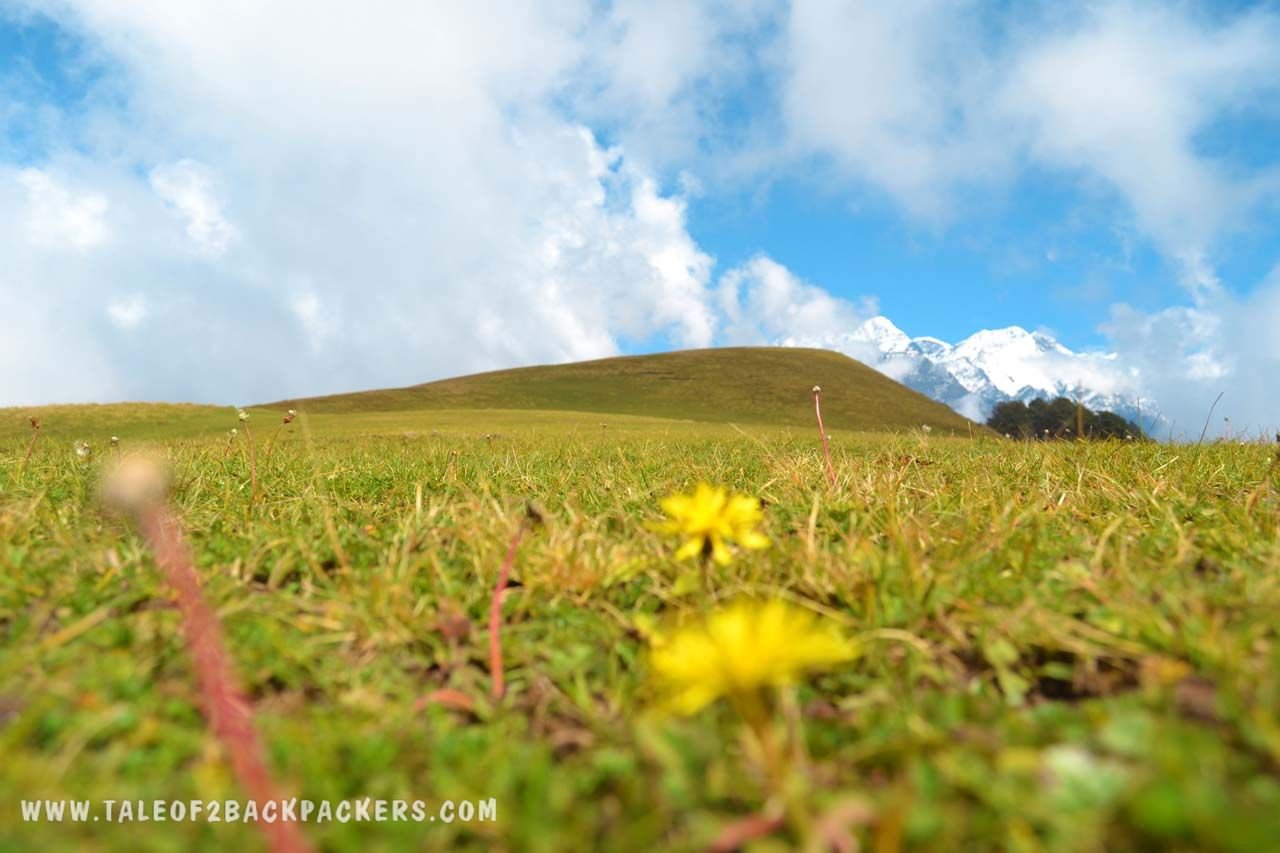
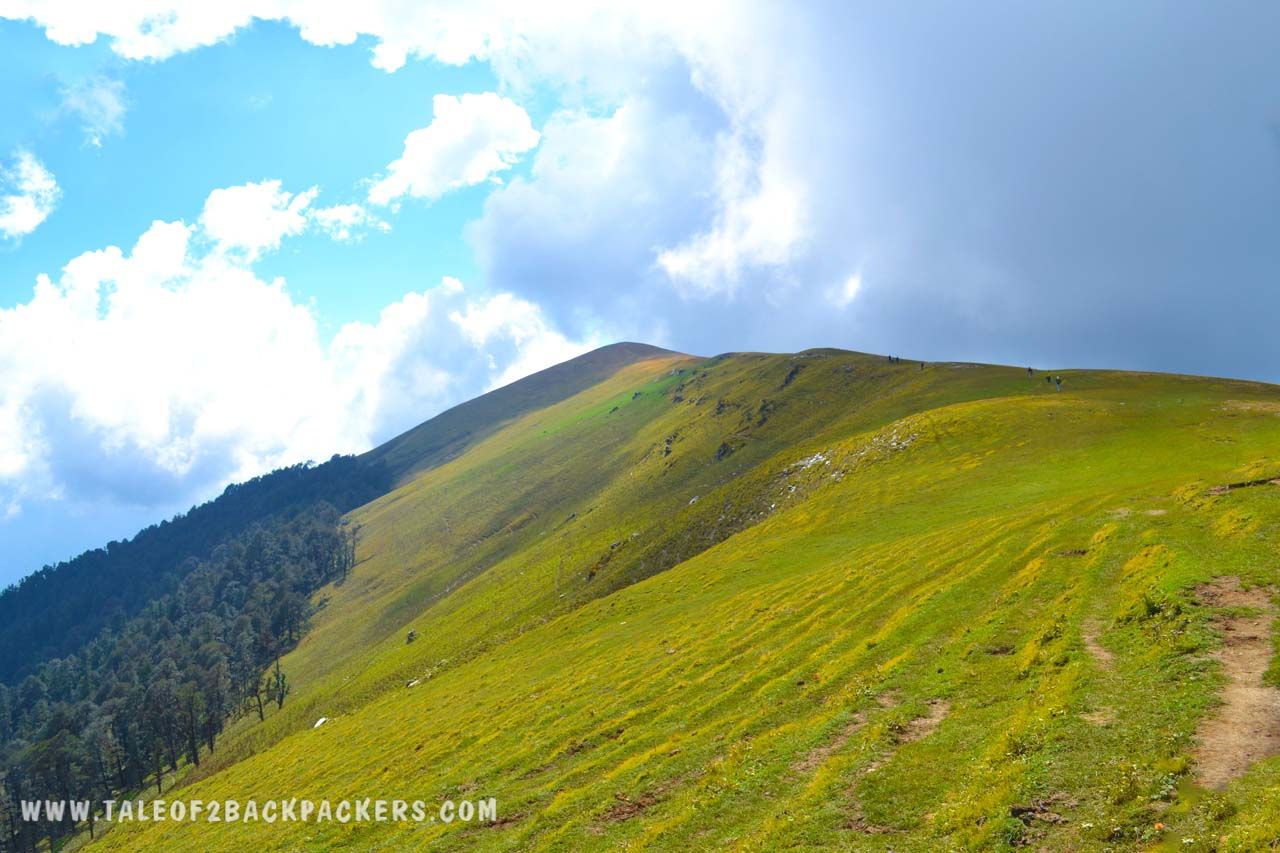
We were totally mesmerized seeing the Bugyal. It is Asia’s largest meadows and we could see endless green around. At a height of 11360 ft, it provided a 360-degree view of all the mountain ranges. We could see the Trishul and the Nanda Ghunti peak clearly. Who can remain tired after seeing the beauty of nature in this way? Our tiredness vanished in a moment. We literally ran around the green stretches soaking in as much as we can. We stopped at Ali Bugyal for a quick lunch.
Mountains seem to have a mood of their own. Suddenly the sunny weather changed and clouds seemed to descend from nowhere. We then started our journey towards through the green meadows enjoying nature and seeing the cattle grazing.

Trek to Bedni from Ali Bugyal was about 5 km following both uphill and downhill paths. As we descended towards the Bedni Bugyal, we saw the tents that looked like colourful specks on green stretches. Once the campsite was visible, we ran towards there. We were tired and wanted to dump our backpacks at the earliest.
After we settle down, all the team members had a cricket match at the Bedni Bugyal. Just imagine playing cricket at a height close to 13000 ft! The match was stopped by sudden rains and we all ran into our tents for shelter. In mountains, you can never predict the weather.
Day 3: Closer towards goal : Bedni Bugyal – Bhaguabasa
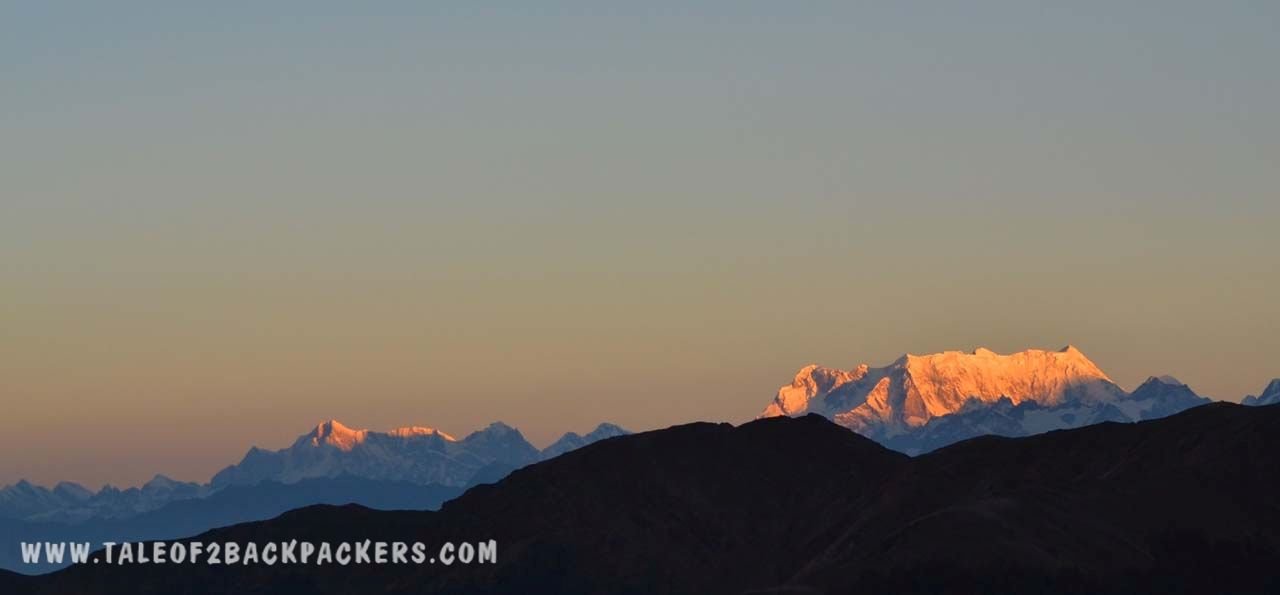
Early in the morning, we were lucky to see the first rays of sun over the Trishul and gradually the golden rays of sun spreading towards the Chaukhamba ranges. It was such an amazing sight – something that cannot be explained by words. The sheer joy of seeing the golden rays of sun on Trishul could not be explained by words.
The trek started as usual and our first stop for the day was the Bedni Kund. The water in the lake is crystal clear and the reflection of the mountain ranges could be clearly seen in it.
Remember, the legend behind the Bedni Kund?
A steep ascent followed after that and we could see some traces of ice on the way. We reached Ghora Lotani after a walk of about an hour or so. This place is called such because horses do not go beyond this point. The grassy terrain abruptly changes here to rocky patches.
Our next halt was Pathar Nachauni where we had our lunch. It is the point where Goddess Nanda Devi had created the holes at the feet of the dancers. The three craters were quite symmetrically placed. It seemed that the story might be quite possible!
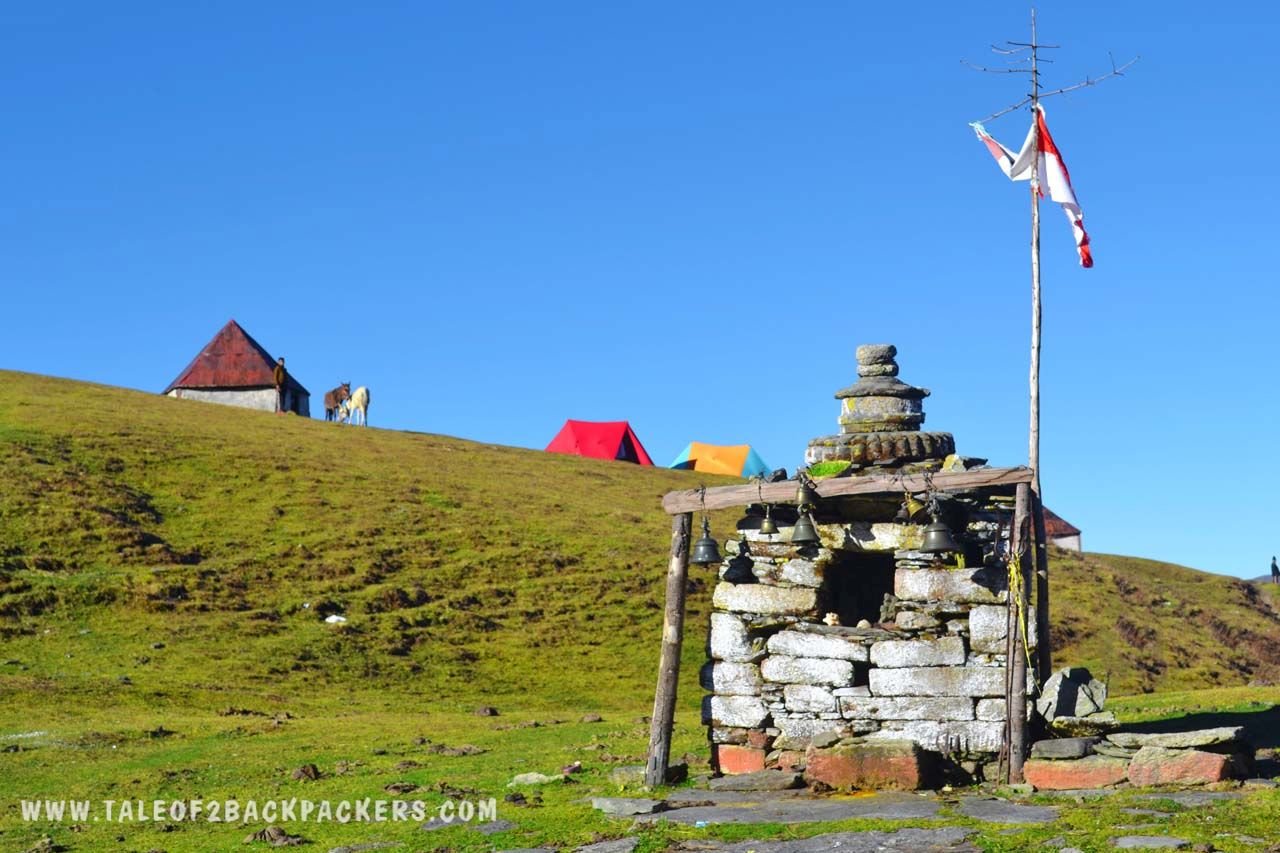
Our uphill trek started again. I kept slogging behind as my legs just wouldn’t cooperate. It then became a test of my will power and determination. The stretch was narrow and rocky. It was a steep zigzag path towards our next destination Kalu Vinayak. The path seemed never-ending, but our guides were telling us “just a little more and you will see the temple”. We kept on walking but the temple was nowhere in sight. And when the Flag of Kalu Vinayak temple was seen, it seemed like an oasis to us. It had already become chilly and we hurried towards Bhaguabasa, which was the camp for the day. The camps at Bhaguabasa were the most difficult ones as they stood on bare rocks.
At Bhaguabasa, we met a very interesting person, Dinesh. He joined our team as a special instructor for the summit. He had already done Roopkund Trek 84 times before! That was way back in 2013. I think he must have completed 200 times by now! The Trishul could be seen very clearly from our campsite. The Trishul was playing hide and seek with us through the clouds, and together with the starry moonlit skies, had us spell bound.
Day 4: The Climax : Summit day to Roopkund and Junargali and back to Pathar Nachauni

It was the summit day! We were all excited. The team was ready and we started quite early at 4:00 am. It was dark and extremely cold and we were wearing several layers of clothing. The temperature perhaps was way below zero degrees.
The entire team started moving in a single line. The ascending path was narrow and rocky with patches of snow. After some time, we could see the first rays of light. As usual, it was an exhilarating moment to see the first rays of the sun kissing the majestic mountain tops. The snow-capped mountains radiated gold and the skies played with orange, red and yellow colours. You have to see it to feel it.
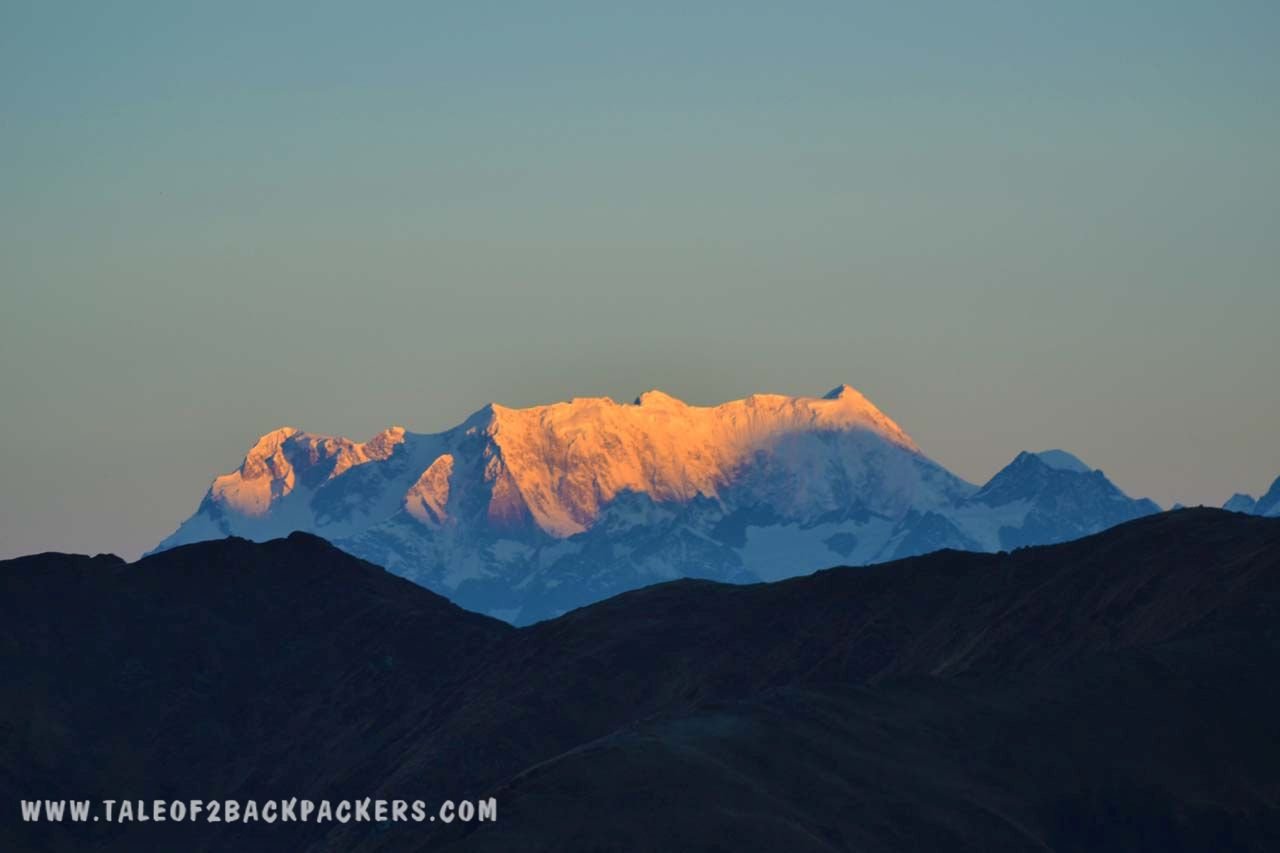
After an hour of walk, we could see a board saying “Roopkund – 500 metres”. The excitement in all was palpable and everyone forgot their fatigue and moved with renewed zeal. After a few more narrow and difficult crossings, we were finally in front of the mysterious lake – Roopkund at 14500 ft.
We were happy, excited and no words could describe what we were feeling. Agni and I have completed our first Himalayan trek! It was a moment of celebration. Our trek guide then announced that we would climb to the Junargali Pass.
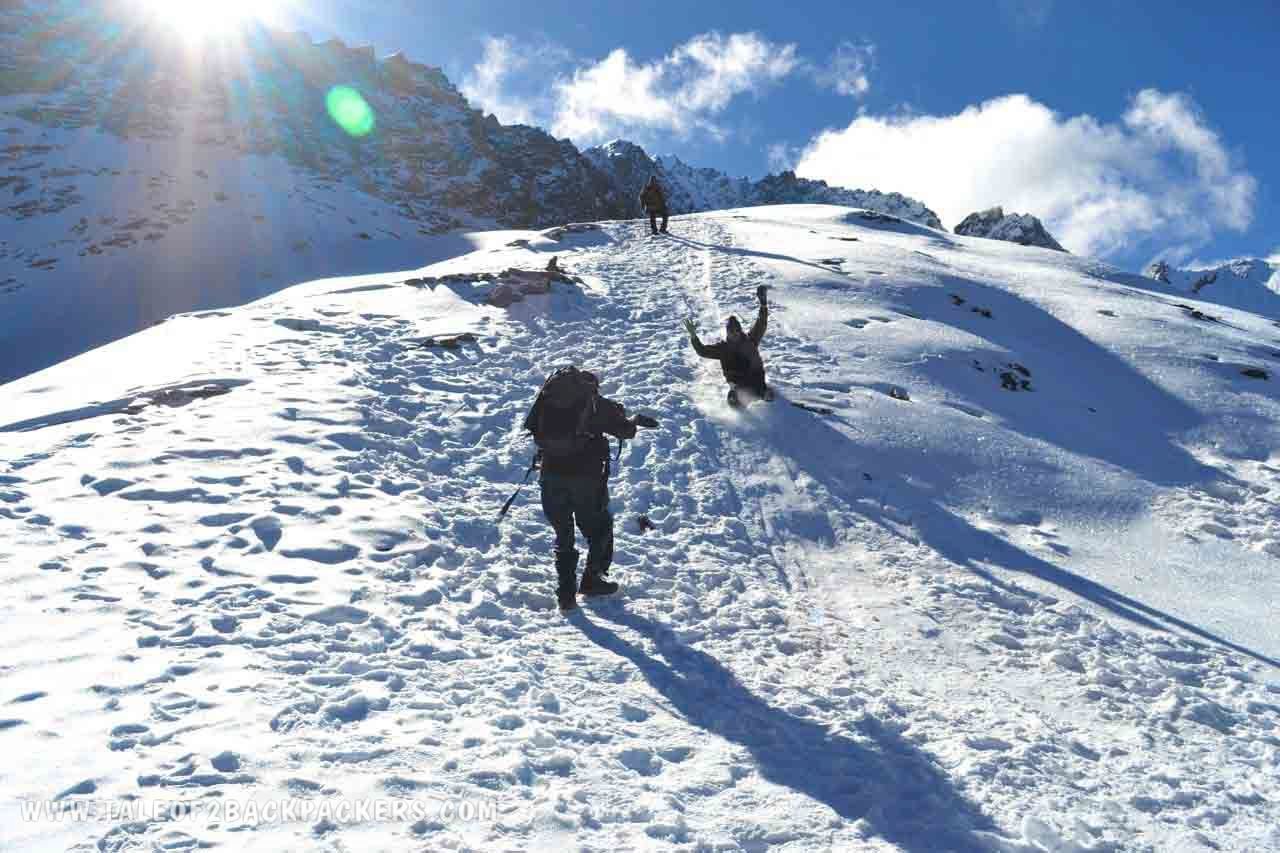
Junargali was another 300 feet above Roopkund and it was completely covered with snow. Trekking in snow was never easy, and I was doing it for the first time! After about 30 minutes of scaling the snow. We reached the top of Junargali. It gave us a 360-degree view of all the ranges – Trishul, Nanda Ghunti, Chaukhamba ranges. The view was anything to die for. I felt that all the pains taken for this trek were worthwhile. Unfortunately, our camera played spoilsport and simply refused to work at -7 degrees. I could not capture the memories on my lens, but definitely captured them in a more prominent place!
Did you know? Trishul is a group of three mountain peaks with Trishul I at 7120 m being the highest point. The three peaks resemble a trident (or trishul). T. G. Longstaff made the first climbing survey of Trishul in September 1905. He returned to climb in 1907 with two other Britons, three Alpine guides, and a few of Gorkhas. They ascended through the Rishiganga valley, to the north of the peak and then onto the Trishul glacier. From there they climbed the north ridge finally reaching the summit on 12 June in 1907. At that time Trishul was probably the highest mountain to have been climbed. The climb was noted also for the first use of supplementary oxygen in a major climb.
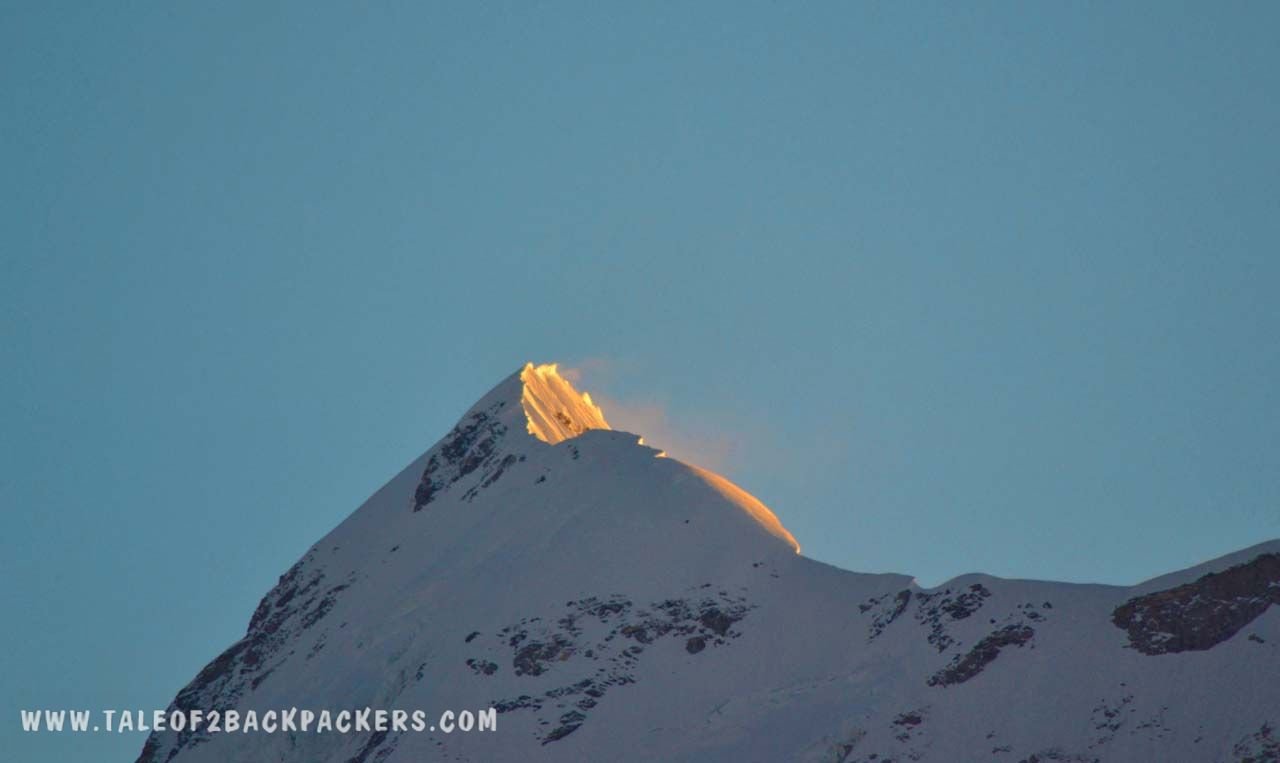
As the sun was rising, we were told to descend quickly as the snow would start melting and then trekking would be difficult. We started our descent towards Roopkund Lake and I understood trekking down in snow could be so difficult. I fell down a couple of times. Then our guide decided an ingenious way to send me down. I sat down on the snow and he pushed me and I glided gleefully on the snow towards the base. Soon others were seen gliding through the snow. See, I started a trend!
We spent some time at Roopkund Lake. We were intrigued to see the number of skeletons. All these while I was apprehensive whether I would see a skeleton! But my fears were baseless! There were so many lying all around. Bones, cracked skulls, rib cages, all were there. Indeed something catastrophic might have happened here aeons back.
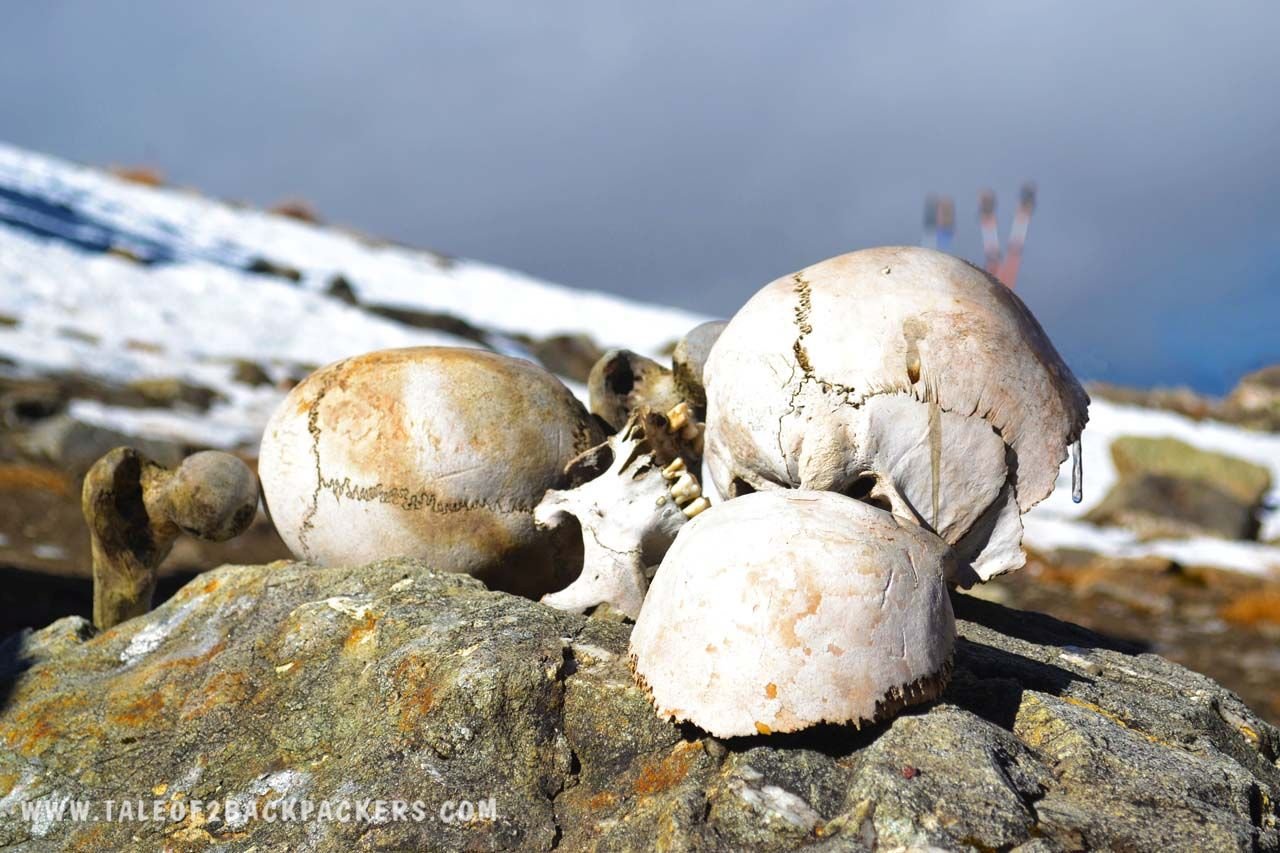
We started our journey back towards Bhaguabasa. Once we reached there, we had our lunch. The plan was to move towards Pathar Nachauni after lunch. But suddenly the weather began changing dramatically. It started with rain and then there was a hailstorm in full force. We were all huddled inside a tent waiting for the storm to subside. When the hailstorm subsided (it did not end though), we wore our raincoats and ponchos and started towards Pathar Nachauni campsite. It was now a downhill trek with clouds all over us. We descended down at brisk pace but the path never seems to end. After about 2 hours of downhill trek, we reached the campsite. It was cold and chilly and we were all lucky to get inside the warmth of our sleeping bags and tents!!!
Day 5: The most beautiful campsite : Pathar Nachauni – Gehroli Patal
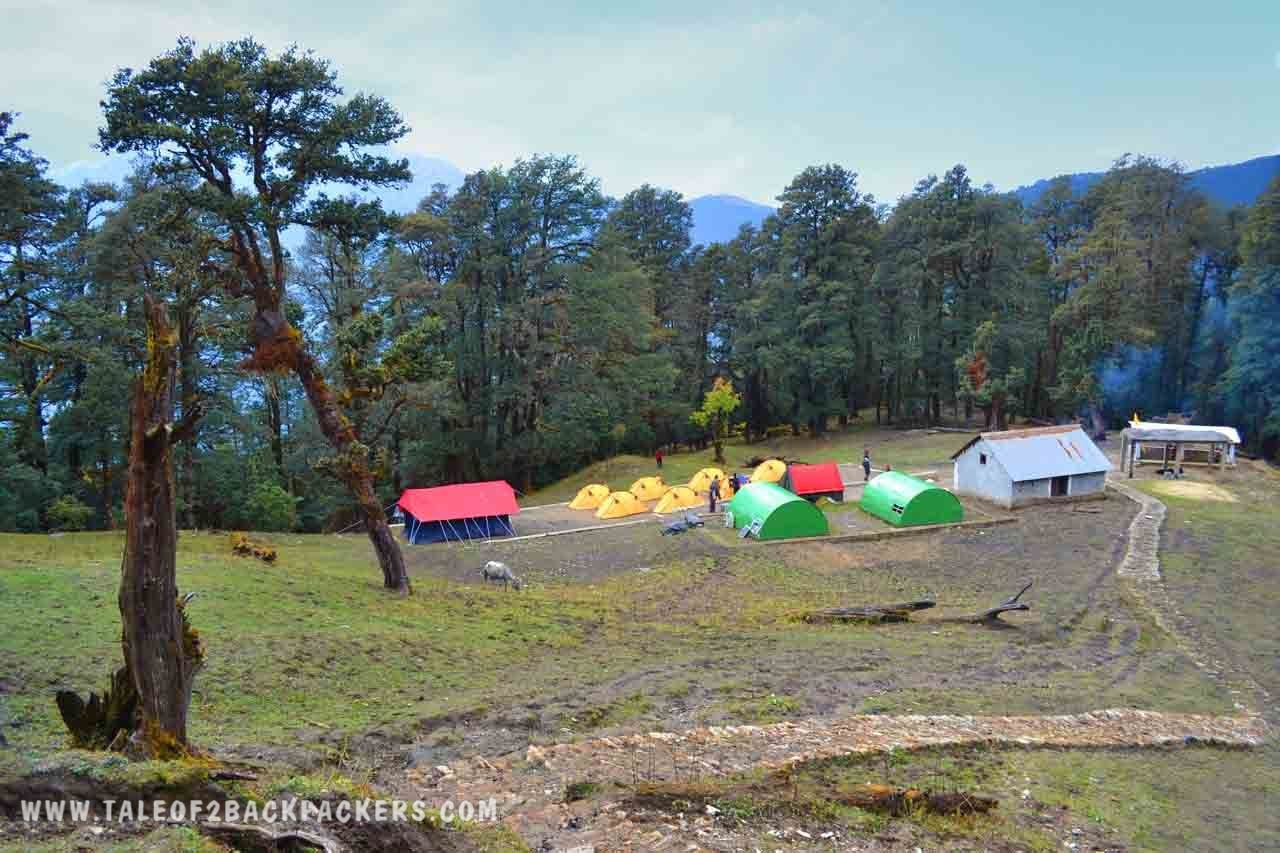
We left Pathar Nachauni at about 8.30 in the morning and took the same route back to Bedni Bugyal. We stopped there for lunch and then started our journey towards Gehroli Patal. The way to Gehroli Patal is through beautiful rhododendron forests. The forest had an incredibly dreamy atmosphere and I felt as if I was in some gothic movie. As we descended down for about an hour and a half, we reached our campsite.
It was a campsite in the midst of the forest, and by far, the most romantic one. Just imagine the feeling of staying in tents under the canopy of large trees in the middle of a dense forest!
The trek has almost come to an end. While some rested in their tents, some others roamed around the forests. In the evening we had a campfire where we exchanged our stories. It was quite a fun-filled evening!

Day 6: Back again: Gehroli Patal – Wan – Lohajung
We started off a little late this day. It was an easy downhill trek. We descended down and reached the Neel Ganga again. We crossed the stream and went towards Wan. Till now the weather was sunny, suddenly clouds began to form and in no time it started raining heavily. It is true that you can never trust the mood of the mountains!
We put on our raincoats and started walking at a fast pace, but the rain proved mightier. We were totally drenched when we reached Wan. We had hot tea and Maggi at Wan and after that left for Lohajung in a jeep.
The next morning greeted us with a new surprise. We viewed twin rainbows from the base camp. I had never seen such clear and beautiful rainbow, leave alone two together. It was as if spreading colours and happiness to everyone.
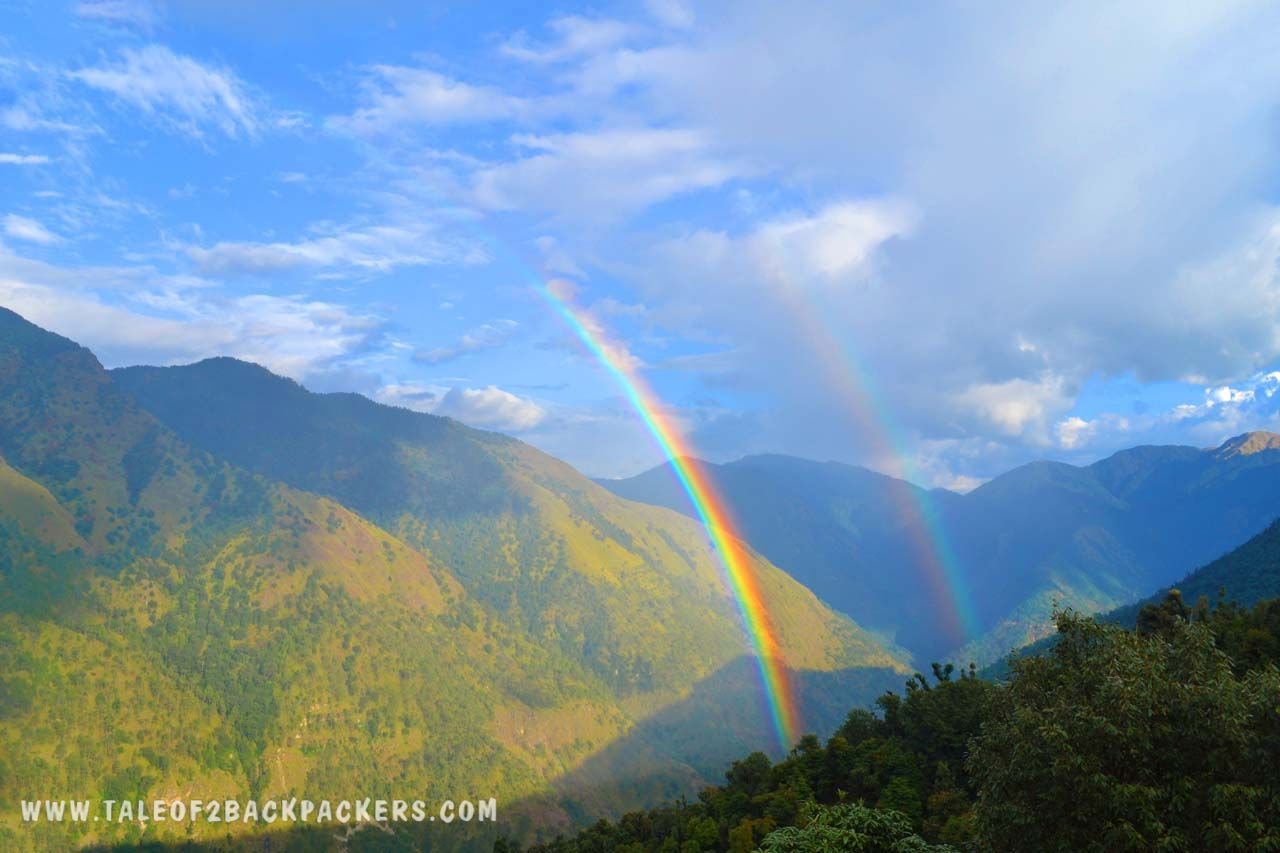
And that is about the Roopkund Trek. Don’t you think this trek in Uttarakhand has all the beauty and folklore to be a great trek? Roopkund Trek will always remain close to our hearts. SO much we were happy and enthused after completing this trek, we decided to go for the Chadar Trek next year January. And we completed that trek successfully too!
Roopkund trek map
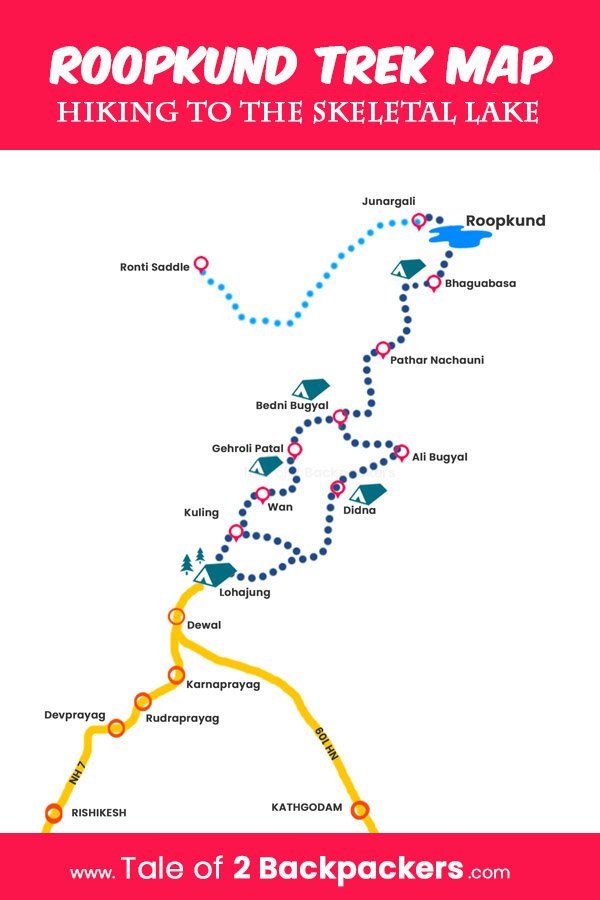
Is Roopkund Trek banned?
Recent Updates: As per Uttarakhand High court Order (Petition No. : 123 / 2014) on August 2018, overnight camping is banned on all the alpine meadows or Bugyals of Uttarakhand. So the current fate of Roopkund trek is uncertain.
We had done this trek in 2013, way before trekking in the Himalayas had been over-commercialized. In the last few years, we have seen the pictures of Bedni Bugyal on the net and social media. The place looked no more than a picnic site. To top it all, commercial trekking companies were bringing more number of people to these trekking trails than the ecosystem could handle.
The treks are glamorized and we had tourist trekkers instead of genuine trekkers who love the mountains and are ready to face the hardships of trekking and camping. These tourist trekkers wanted the best of facilities, good food and even table and chair facilities while trekking. They can probably see the mountains sitting at the comfort of hotels in the hill stations. Why bother coming to a trek? The insane number of trekkers and tourists create havoc on the ecosystem of the place disturbing both the flora and fauna of the place. Know why over trekking is harmful to the Himalayas in our post.
It is perhaps unfeasible to completely ban treks. Trekking does bring money into the local economy. Perhaps the government can cap a limit on the number of trekkers. There might be an introduction of a permit fee for the area. What do you think?
A few more pictures from the Roopkund Trek
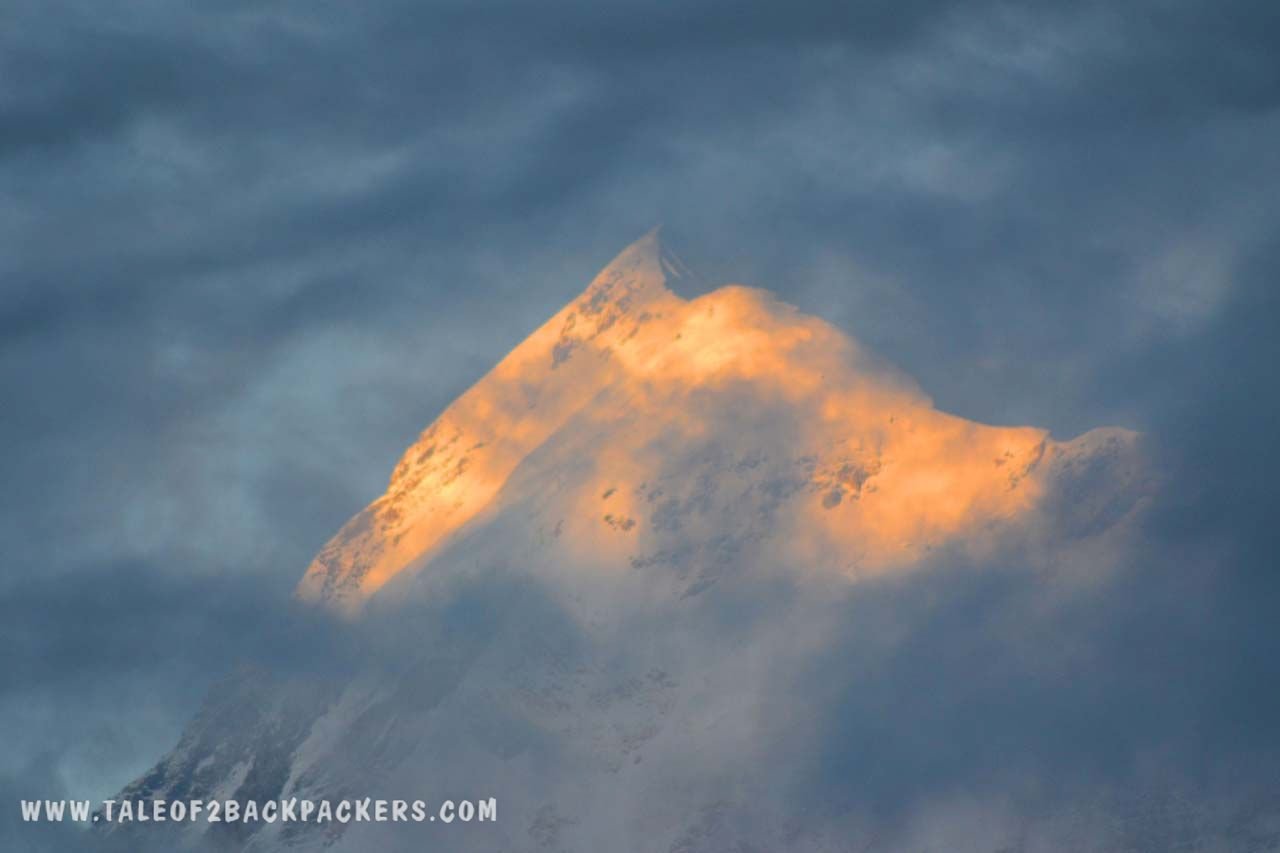
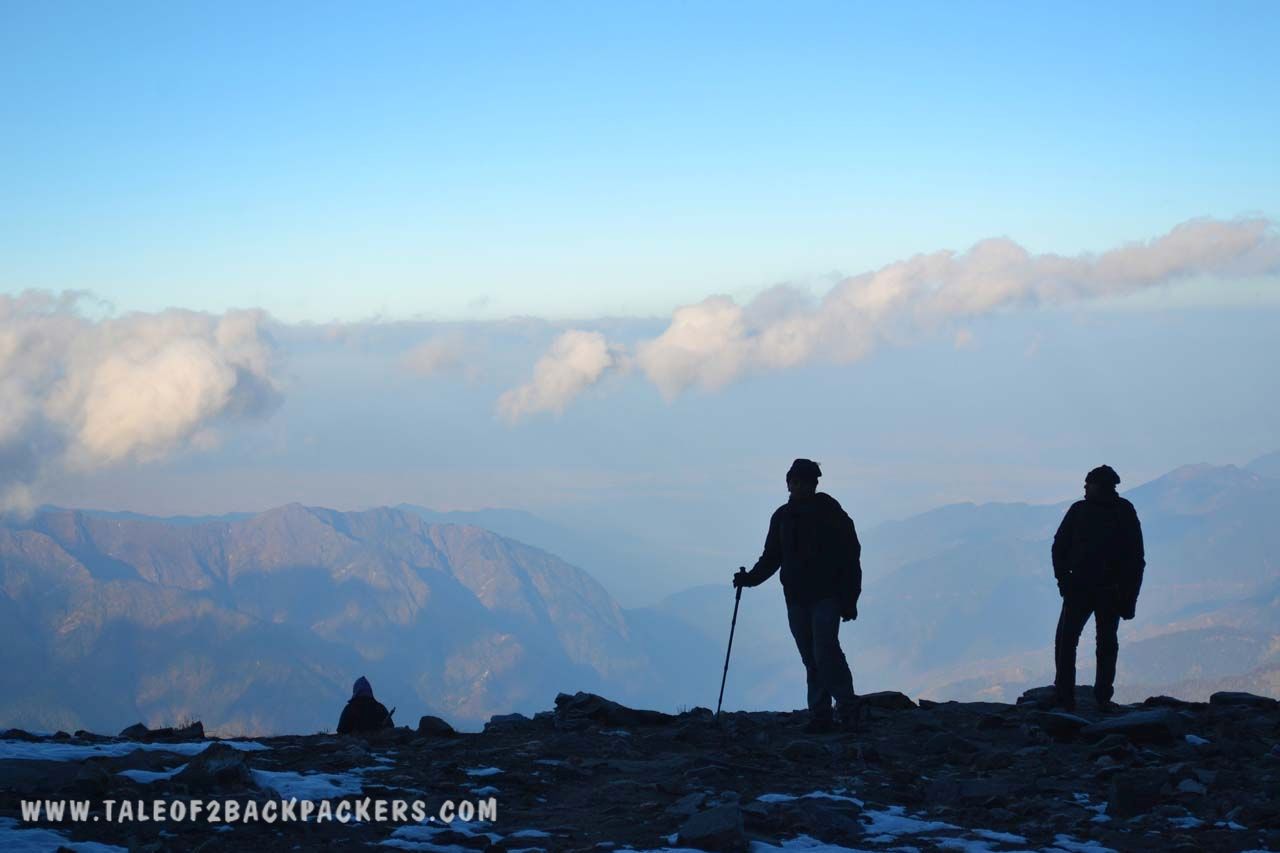

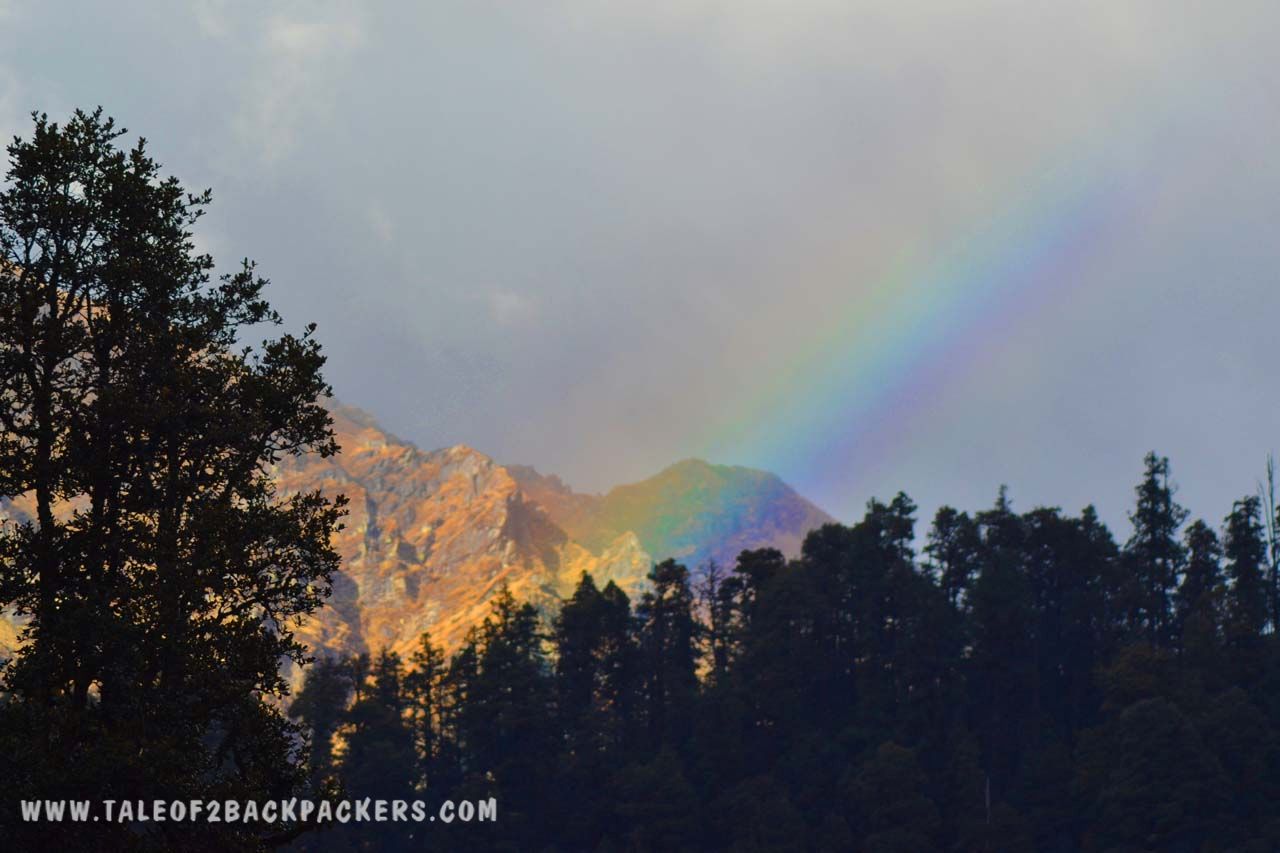




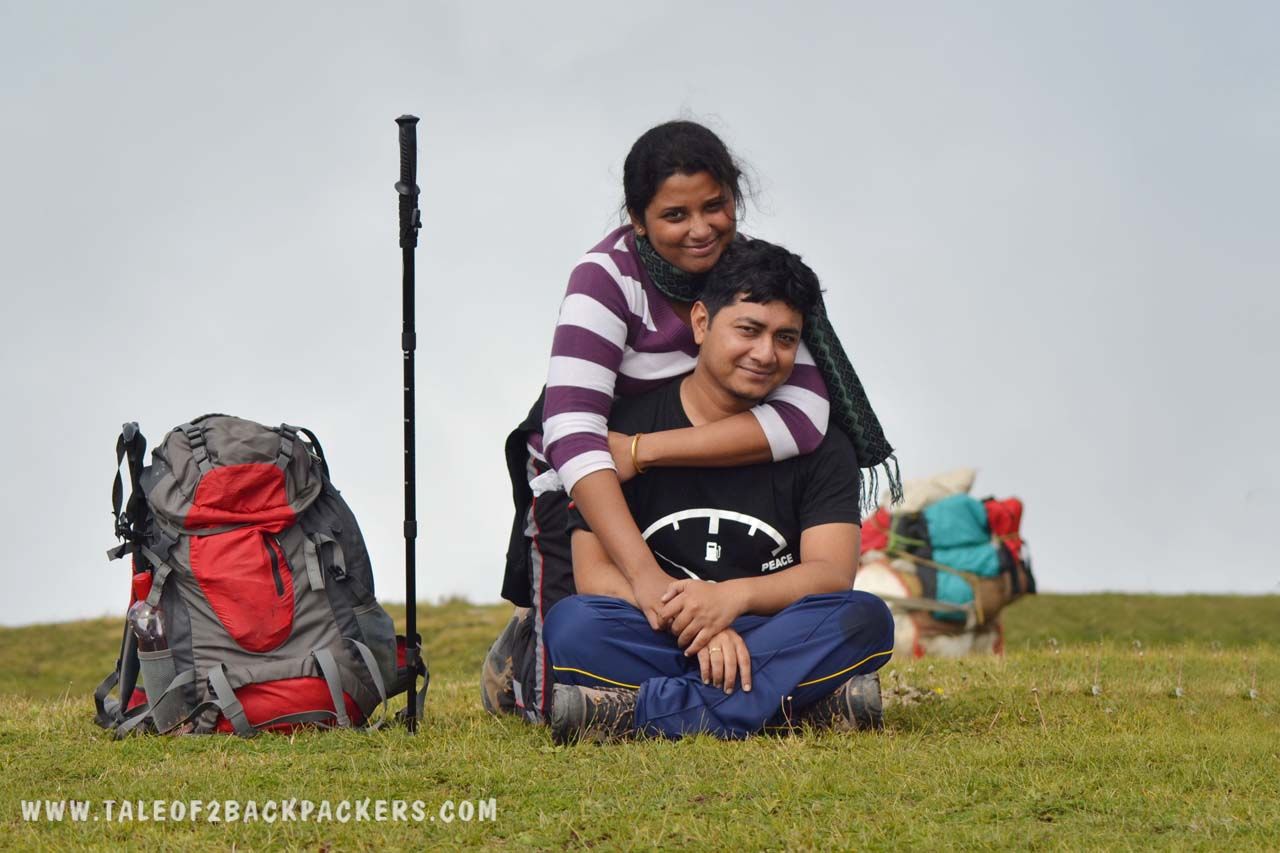
After completing the trek
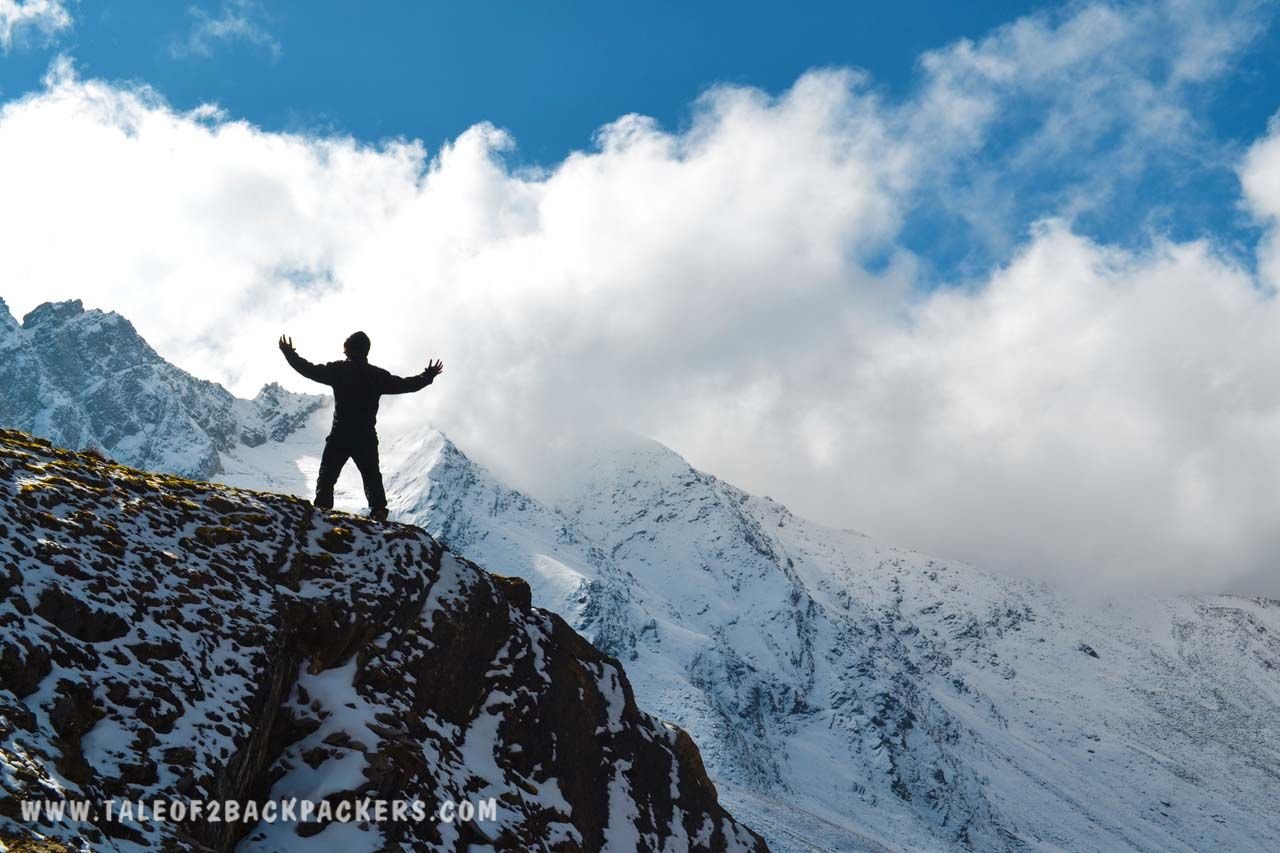
Did you like the post? Please share it and pin it! Subscribe to our newsletters for more travel and trekking updates!


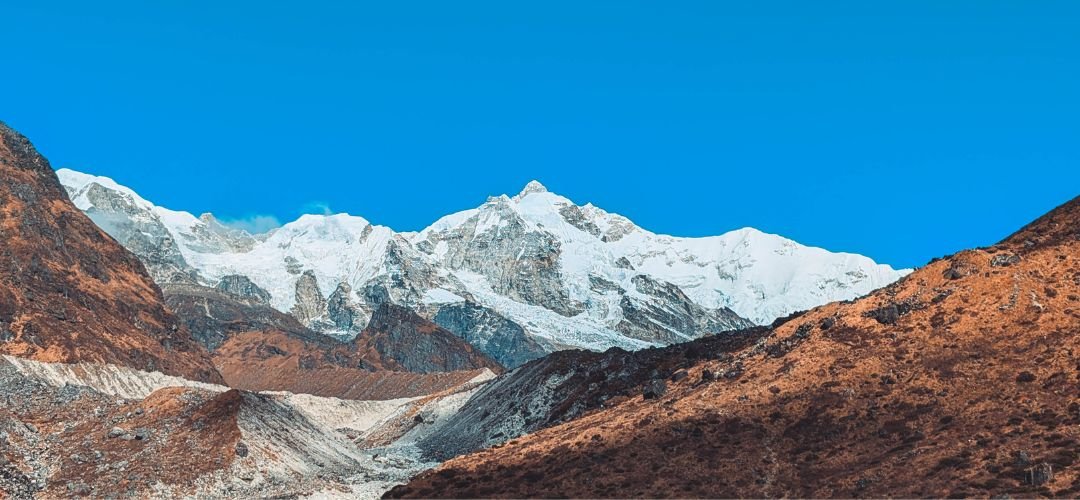
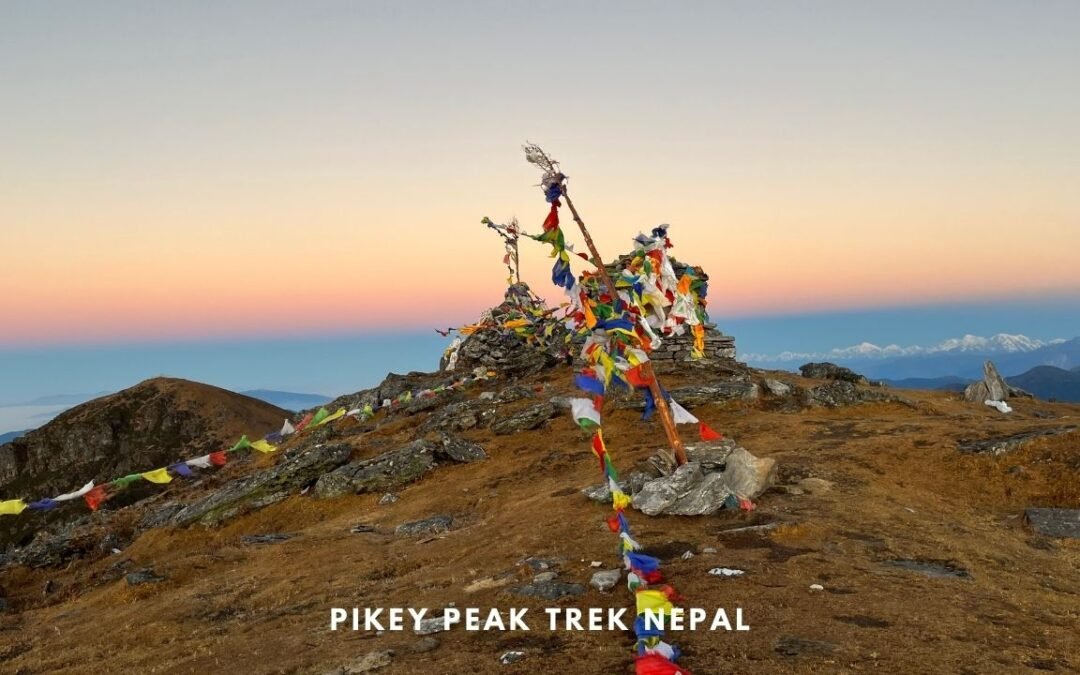
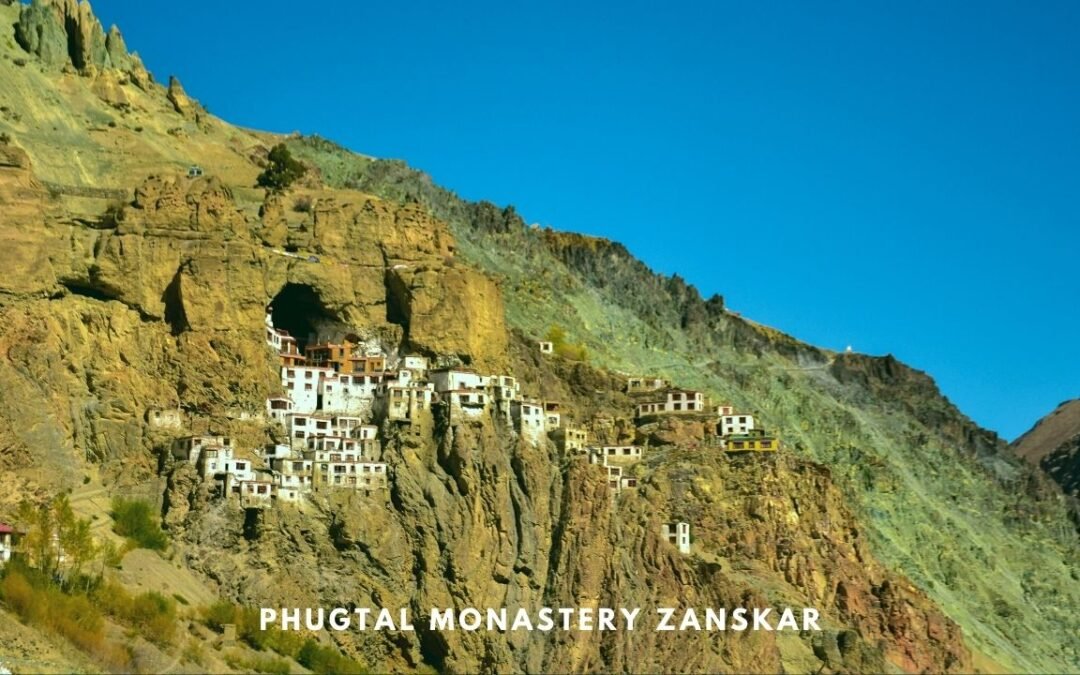
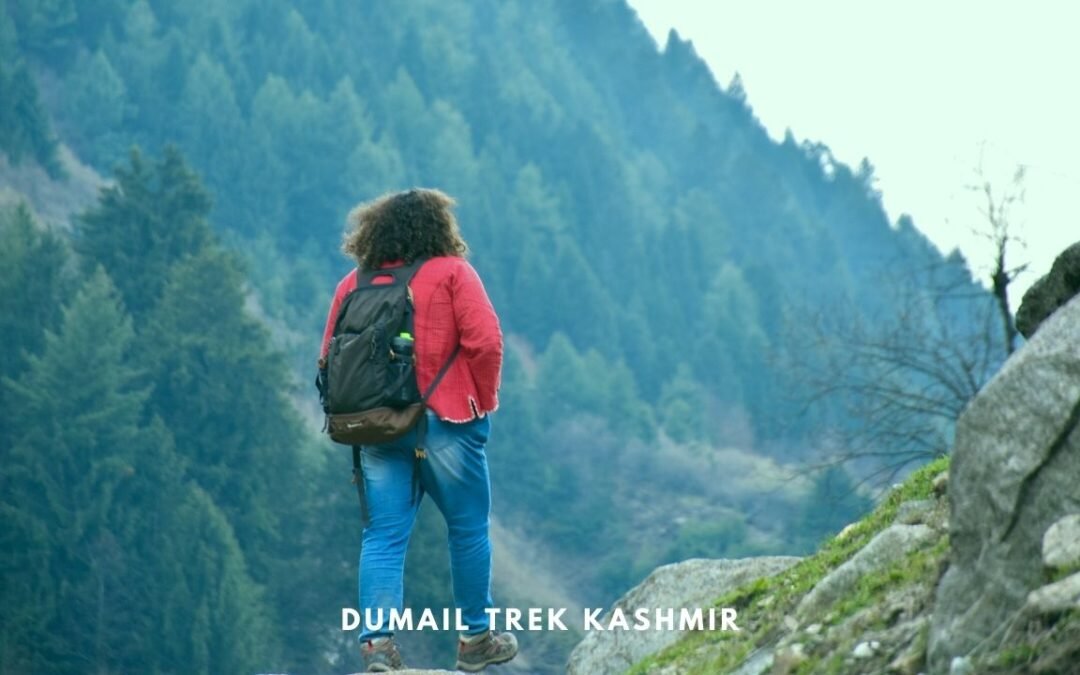
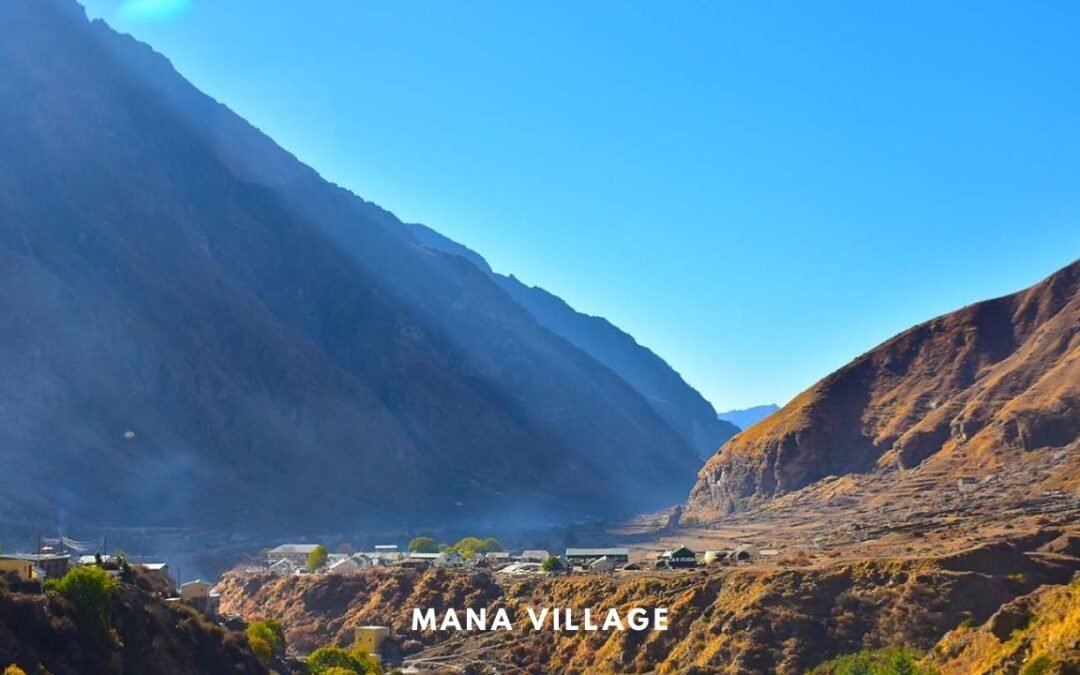
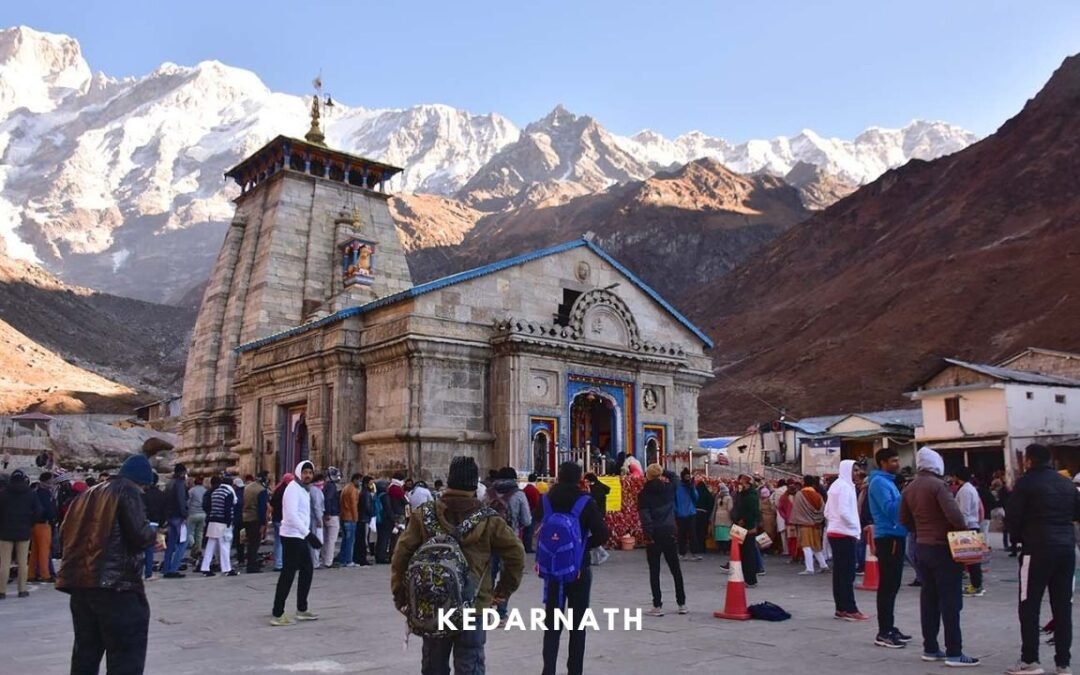
This article provides a full itinerary for Roopkund Trek. Beautiful pictures and full experience shared.